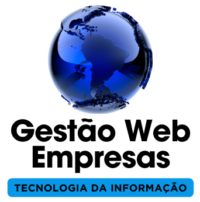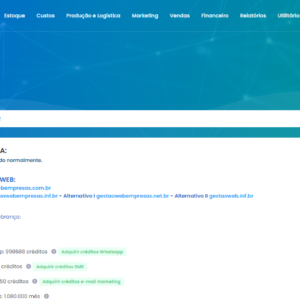Unleash The Potential Of Fog, Edge, And Cloud Computing: A Comprehensive Introduction By Ayush Ranjan
7 de março de 2023Scalability is achieved by including more edge devices and fog nodes to the network. Fog computing leverages the assets obtainable on the edge and may scale horizontally. Fog computing is geographically distributed and operates in close proximity to the information sources and end-users. Fog nodes are positioned on the community edge, corresponding to IoT gateways, routers, or on-site servers, enabling native processing and quick response. While fog devices are resource-constrained in comparability with cloud servers, their decentralized nature and geological spread enhance service reliability, masking vast areas.
Cloud computing tends to work best in large, centralized information facilities or servers the place providers are delivered nearly with none bodily interaction. However, Fog computing makes use of a method more distributed setup, with numerous smaller server clusters positioned at varied factors across the community. This makes fog computing much more environment friendly when it comes to resources, leading to faster communication speeds and lower latency when compared to cloud computing. As a end result, data is processed sooner and more effectively with fog computing than with cloud computing, making it a more fascinating option for applications that require real-time responsiveness. Whether it’s streaming video or interacting in a digital surroundings, completely different characteristics of fog computing supply a degree of velocity and agility that the cloud merely can’t match.

It extends the capabilities of edge computing by offering a layer of computing infrastructure between the sting units and the cloud. This infrastructure known as the fog layer, and it offers extra computing resources and companies to edge devices. In conclusion, fog computing and cloud computing are two distinct computing fashions that provide distinctive advantages and limitations for IoT initiatives. While fog computing excels in low latency, enhanced privateness, and offline capabilities, cloud computing shines in scalability, extensive storage, and accessibility.
Fog Computing Vs Cloud Computing
Cloud computing needs 24/7 web access for its operations, whereas the rest of the two can operate without web access. Plus, there is no need to maintain native servers and fear about downtimes – the vendor helps every thing for you, saving you cash. According to Statista, by 2020, there might be 30 billion IoT gadgets worldwide, and by 2025 this quantity will exceed seventy five billion connected things. In contrast, doing the same with a neighborhood server may have taken weeks or months.
However, fog computing is a more viable option for managing high-level safety patches and minimizing bandwidth issues. Fog computing allows us to locate information on every node on local sources, thus making data analysis extra accessible. Fog can also embody cloudlets – small-scale and rather powerful fog computing vs cloud computing knowledge centers positioned on the community’s edge. They are meant to assist resource-intensive IoT apps that require low latency. Fog networks rely on a decentralized approach, with techniques on the network’s edge, corresponding to sensors or units, storing and processing data.

In basic, cloud computing is better suited to duties that require large amounts of processing power, corresponding to big data analytics and complicated modeling. This type of fog computing relies on the computing energy of servers positioned in the fog layer to course of and analyze information. Server-based fog computing is right for functions that require extra computing energy than edge devices can present.
What Is May Computing?
Client-based fog computing is right for purposes that require real-time processing, such as autonomous autos and industrial IoT. Edge computing and fog computing are two ideas that are usually used interchangeably, but they have important variations. Edge computing is a decentralized computing model that brings information processing closer to the devices and sensors that generate it. Fog computing, on the other hand, is a distributed computing mannequin that extends the capabilities of edge computing to a larger community of devices and sensors. Cloud computing relies on centralized data centers, usually located in remote areas, serving a variety of clients over the internet. The bodily distance between the cloud infrastructure and end-users can introduce latency and potential bandwidth limitations.
There are some key differences in terms of the place these services are literally positioned. This allows it to offer quicker response instances and safer knowledge handling however comes with certain constraints in relation to scalability. Edge computing and fog computing are two complementary computing models which might be designed to address the challenges of processing and analyzing information in real time. Edge computing brings computing nearer to the supply of data, while fog computing extends the capabilities of edge computing by offering extra computing sources and providers to edge gadgets. Both models have many practical purposes in at present’s digital age and can play an increasingly essential position in the future of computing. Fog computing, also referred to as edge computing, brings computational assets and companies closer to the edge of the network, near the data sources and end-users.
The appreciable processing energy of edge nodes permits them to compute giant quantities of knowledge with out sending them to distant servers. These tools will produce large quantities of information that must be processed rapidly and completely. F fog computing works equally to cloud computing to satisfy the rising demand for IoT options.
It’s related to working purposes as actually close as attainable to the location where the information is being made as an alternative of bringing together cloud or data accumulating zone. Cloud computing supplies far more superior and better processing technological capabilities than fog and edge frameworks. It allows you to save more data than the opposite two with restricted processing energy. Only in cloud computing, it’s possible to combine multiple information sources, including the device and the cloud computing knowledge source. Cloud fails with out an web connection, whereas Fog succeeds even with out one because it follows many procedures and guidelines. Compared to fog computing, cloud computing has a quicker system response time.
Cloud Computing Mcq
When it comes to fog computing vs cloud computing, there are a selection of key differences that set these two applied sciences apart. Perhaps essentially the most important difference is latency or the amount of time required for data to travel between gadgets. In cloud computing techniques, latency is usually high because of the centralized nature of the platform. Fog computing is a decentralized computing infrastructure or process during which computing resources are positioned between a data supply and a cloud or one other data middle. Fog computing is a paradigm that gives companies to person requests on edge networks.
There are a quantity of types of fog computing, together with client-based, server-based, and hybrid fog computing. Fog computing is designed to work with a broad range of units, including sensors, cameras, and other IoT devices. This makes it an ideal answer for organizations with various hardware necessities. Fog computing has a quantity of unique traits that make it an attractive choice for organizations looking to course of data in actual time. Cloud is actually centralized and incorporates lots of data that might be positioned all over the globe, far from client units. Many tiny nodes are dispersed all through the fog and are situated near the consumer devices.
What’s Edge Computing?
Furthermore, scalability can be an issue if the variety of units and data volume increases significantly. Despite these limitations, fog computing proves to be a viable possibility for IoT projects that require low latency, enhanced privateness, and offline capabilities. Regarding cloud computing versus fog computing, there are a couple of important differences that set these two paradigms apart. Perhaps the obvious difference between fog computing and cloud computing is the variety of server nodes required for each approach.
The convergence of fog computing, edge computing, and cloud computing is a game-changer! With the advent of 5G expertise, edge computing is on the cusp of a serious breakthrough. The integration of AI and machine learning is driving the development of intelligent edge units, able to processing and analyzing data domestically. This is a big shift from centralized cloud assets, thereby paving the way in which for autonomous systems, from self-driving cars to sensible factories.
With billions of connected units producing massive quantities of knowledge, it has turn into essential to have environment friendly computing fashions that may handle this information successfully. Two such models that have emerged as well-liked choices for IoT tasks are fog computing and cloud computing. This article goals to explore the professionals and cons of fog computing and cloud computing, serving to you make an informed choice for your IoT project.
- According to Statista, by 2020, there might be 30 billion IoT units worldwide, and by 2025 this quantity will exceed 75 billion related issues.
- Ultimately, the selection between cloud and fog computing comes all the means down to the precise needs and necessities of an organization, as each approach provides unique advantages and trade-offs.
- A layer of fog lies between a cloud and digital tools like a computer, laptop, or phone.
- While fog computing excels in low latency, enhanced privateness, and offline capabilities, cloud computing shines in scalability, extensive storage, and accessibility.
- The centralized nature of a cloud system leads to high latency, while fog methods expertise low latency as a result of their decentralized nature.
By rigorously evaluating elements such as information processing necessities, latency tolerances, and knowledge security needs, you’ll have the ability to choose the paradigm that aligns finest along with your organization’s targets and technological demands. Cloud computing, however, is a centralized computing mannequin that relies on distant servers to store, manage, and process data. In cloud computing, the info generated by IoT devices https://www.globalcloudteam.com/ is transmitted to cloud servers by way of the internet for analysis and storage. Firstly, it offers just about unlimited storage and computing power, permitting for the handling of huge datasets. Secondly, cloud computing presents seamless scalability, enabling simple enlargement as the project grows. Lastly, it supplies accessibility and suppleness, permitting users to entry knowledge and applications from anywhere with an web connection.
We supply a variety of services at unbeatable prices that could be custom-made in each means to swimsuit your wants. As a result, the demand for fast and sustainable ways to course of vast amounts of data has risen. The new know-how is prone to have the best impression on the development of IoT, embedded AI and 5G options, as they, like never earlier than, demand agility and seamless connections. Unfortunately, there’s nothing immaculate, and cloud know-how has some downsides, especially for the Internet of Things providers. Edge figuring was made because of Internet of Things units’ momentous advancement, which companions with the online to tolerate info from the cloud or pass on data again to the cloud.
Cloud Service Suppliers
Fog computing is a more decentralized form of cloud computing whereby the computing expertise is between a cloud and a data supply or one other data center. The integration of the Internet of Things with the cloud is a cost-effective method to do enterprise. Cloud computing has superior security measures in place to secure knowledge within the cloud, while fog computing focuses on providing security measures to edge gadgets. Cloud technologies are already bringing a number of benefits to the IoT, however progress doesn’t finish here. Here is a pattern about cloud computing is the most distinguished type of IoT data administration.



